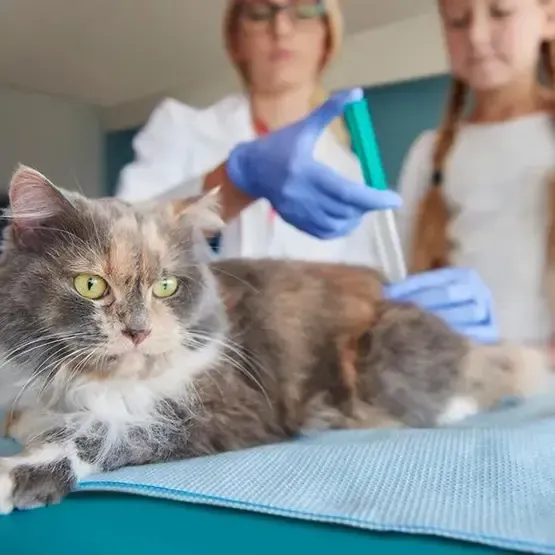Cat Anesthesia
What is Cat Anesthesia?
Anesthesia is a critical part of veterinary medicine that allows procedures to be performed on cats without causing pain or distress. It involves the use of drugs that temporarily inhibit sensation, movement, and consciousness, making it possible for veterinarians to perform surgeries, dental work, or diagnostic imaging safely.
Why Cats Need Anesthesia
Certain procedures, even routine ones like spaying, neutering, or dental cleanings, can be stressful or painful for cats. Anesthesia ensures that your cat remains comfortable and still during these procedures. It minimizes pain and anxiety, reducing the risk of complications for your pet.
Types of Anesthesia Used in Cats
General Anesthesia - Used for major procedures like surgeries, where the cat needs to be completely unconscious.
Sedation - Used for less invasive procedures, where the cat is calm but may not be completely unconscious.
Local Anesthesia - Applied to a specific area of the body to numb sensation, commonly used in minor procedures.
How Vets Ensure Your Cat's Safety During Anesthesia
Before administering anesthesia, your vet will conduct a thorough physical examination and often a blood test to check liver and kidney function. This ensures that your cat is healthy enough for anesthesia and reduces the risk of adverse reactions.
During anesthesia, veterinary staff monitor your cat's vital signs, including heart rate, respiratory rate, blood pressure, and body temperature, using specialized equipment. Adjustments to anesthesia levels are made as needed, ensuring your cat’s safety and comfort.
Preparing Your Cat for Anesthesia
To reduce the risks associated with anesthesia, follow these guidelines:
Fasting: - Your vet may ask you to withhold food from your cat for several hours before anesthesia to prevent vomiting and aspiration.
Limit Stress: Keep your cat calm and relaxed before the procedure, as stress can affect their overall health.
Hydration: Ensure your cat is well-hydrated before the procedure, which can aid in quicker recovery post-anesthesia.
Risks and Side Effects
While modern anesthetic protocols are generally safe, there are some risks, especially for cats with pre-existing health conditions. Potential side effects can include:
Grogginess or drowsiness
Nausea or vomiting
Temporary loss of balance or coordination
Always follow your vet's post-procedure care instructions to help minimize these effects and support a swift recovery.
Recovery and Post-Anesthesia Care
Once the procedure is complete, your cat will enter the recovery phase, where veterinary staff monitor them as they wake up. At home, you may notice mild disorientation or drowsiness, but these effects should wear off within a day. Offer a comfortable, quiet space for your cat to rest, and provide small, frequent meals as they regain their appetite.

Testimonial
What They Say

Was looking for a new Vet near me in Stockton and very happy with Walker Vet Hospital! Customer service, informative, and compassionate with staff and doctors. Give a 10 out of 10. Taking all three of my dogs there happily.


Rae W.

Good value and knowledgeable. No waiting most of the time. Always 2-3 doctors at a time and weekend care available which is appreciated. All of our three dogs been going to Walker Vet in Stockton for some time now. Never any complaints.


Nick G.

Review Us!
Visit our Google review page to share your feedback

Review Us!




